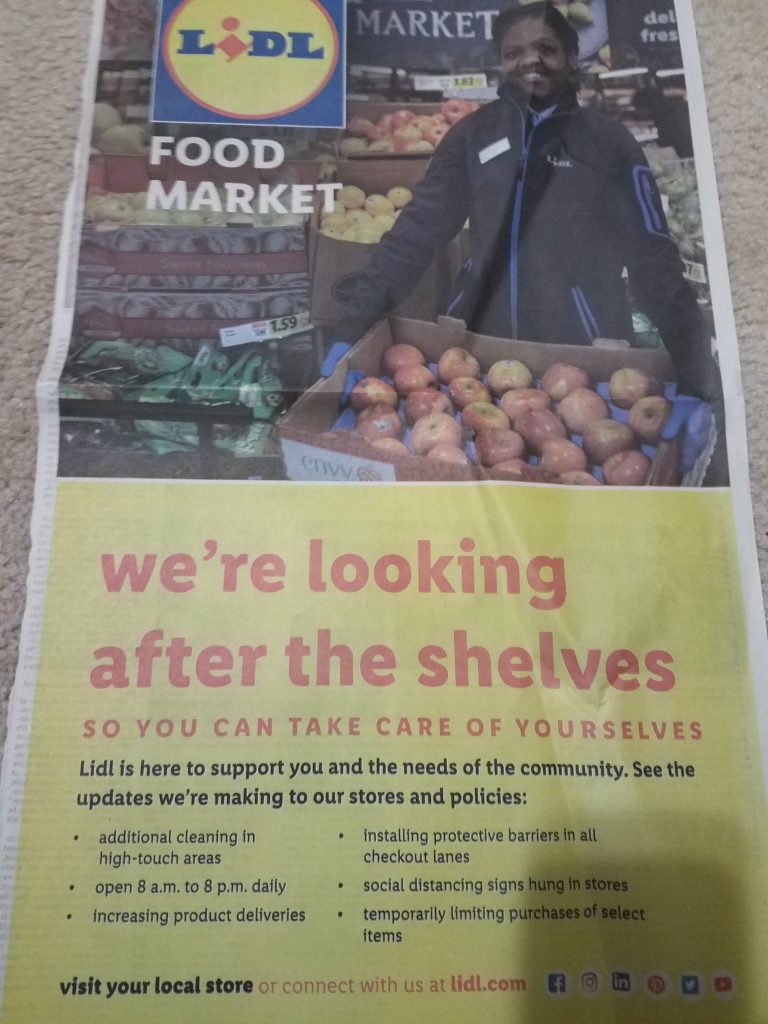What helps businesses thrive during COVID-19?
While many businesses, especially restaurants and small retailers, have seen their revenue drop because of COVID-19, others have thrived.
Some business failures are due to circumstance and public health regulations, such as lock down orders and capacity restrictions. But in some cases, businesses failed because they were unable to respond to the new situation.
Not adapting to the situation:
I know a small, local gift store carries an item I was shopping for. I went to Google and found the store has no website. According to the Google business information, this store opens weekdays at 10:00 a.m. I headed out to the store on a Wednesday around 2 p.m. I found a handwritten note on the door listing the shop’s (reduced) hours, which said the store opens Monday through Thursday noon to 4:00 p.m. However, the lights were off and the store was closed, and I was not able to buy what I needed.
To recap, this store has:
- No website (and thus no way to shop online)
- No updated Google business information
- No social media
Making the best of the situation:
Then, because I still needed this item, I checked out a larger gift store within 10 miles of the small store. This other store does have a website, with online ordering, so I was able to determine whether they carry what I am looking for. It also has updated its Google information, which reflects that it provides curbside pickup. I explore the website, and I find out exactly what COVID measures the store is taking (i.e., requiring masks, providing sanitizer, restricting the number of people in store, widening the aisles to allow for social distancing, and increasing the air circulation).
This second store has:
- Updated website that includes COVID-specific information and the ability to order online
- Updated Google business information
- Social media, with a robust Facebook presence that includes videos and special deals.
How do businesses thrive during COVID? Here are three must-dos:
Embrace digital more than ever. Restaurants and small retailers embraced online ordering (just as the big box stores have done for years). My local library switched to an online ordering and appointments-based way to get books. Successful organizations use all types of digital presence:—social media, websites, Google profiles, e-newsletters, etc.—to communicate with customers, clients, or donors. With many people choosing to stay home or working from home, the internet has become even more important.
Be aware of the situation and explain how you are responding. Do you understand how your customers feel? Are they anxious about getting the virus? Do they want to shop safely? Do they want to save money? COVID has changed the reality for everyone. You have to make changes, and more importantly, you have to make sure your customers know what you are doing to respond to the situation.
Go virtual and like it. Many organizations and businesses use events to drum up support and sales. In 2020, events went from being in person to being virtual. Using a virtual format is not the same as being in person, but to succeed, organizations need to embrace this reality and adapt to it. Churches and synagogues started using Zoom and other livestreaming software to provide religious services to their congregants. Associations moved their annual meetings to be virtual. Some stores, such as the second example above, switched their product demonstrations to platforms such as Facebook Live.
The bottom line is that to thrive during COVID, businesses have to adapt. Failure to adapt will also mean failure to thrive.
Have you seen good examples of adaptation? Please share in the comments.
